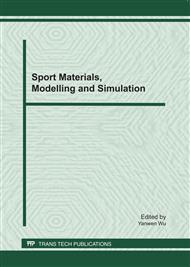p.411
p.416
p.422
p.428
p.434
p.439
p.444
p.448
p.452
Application of Near Infrared Spectroscopy in Wood Water Content Prediction
Abstract:
Water content of Korean pine samples was studied using near infrared spectrascopy (NIR) combinded with parial least squares regression (PLS) analysis. Seven typical wave lengths were selceted to characterize the wood water content of Korean pine. Prediction models of wood water content were developed based on the original NIR spectra at seven varied wave lengths. The best model was showed between wavelengths from 1000 to 2100 nm with correlation coefficient (R) of 0.9871, standard error of calibration (SEC) and root mean square error of calibration (RMSEC) of 0.0337 and 0.0334, respectively. The correlation coefficient(R) for model validation was 0.9817 with standard error of prediction (SEP) and root mean square error of prediction (RMSEP) of 0.0470 and 0.0465, respectively. This study indicated that NIR is a useful tool for fast prediction of wood water content of Korean pine. The modeling proficiency could be improved significantly for some certain wave length. It could be a research focus for future related studies.
Info:
Periodical:
Pages:
434-438
Citation:
Online since:
February 2011
Authors:
Price:
Сopyright:
© 2011 Trans Tech Publications Ltd. All Rights Reserved
Share:
Citation:


